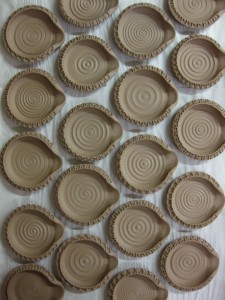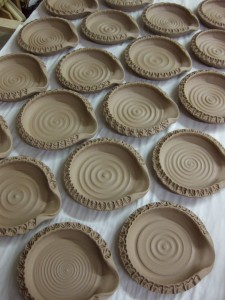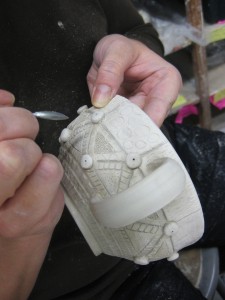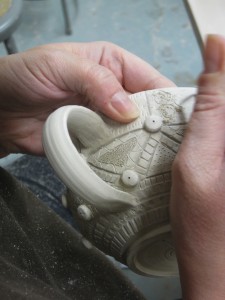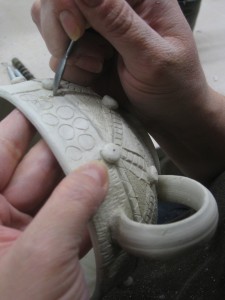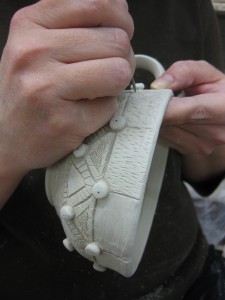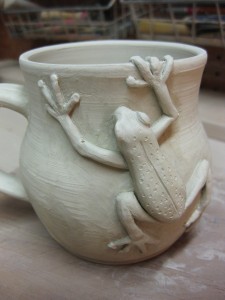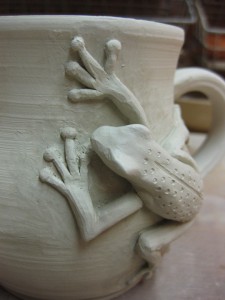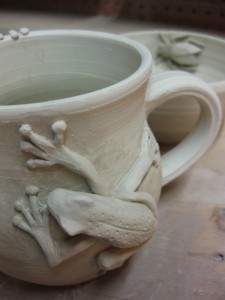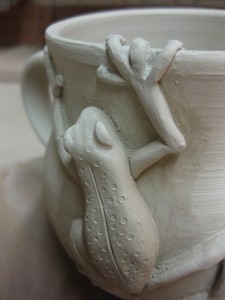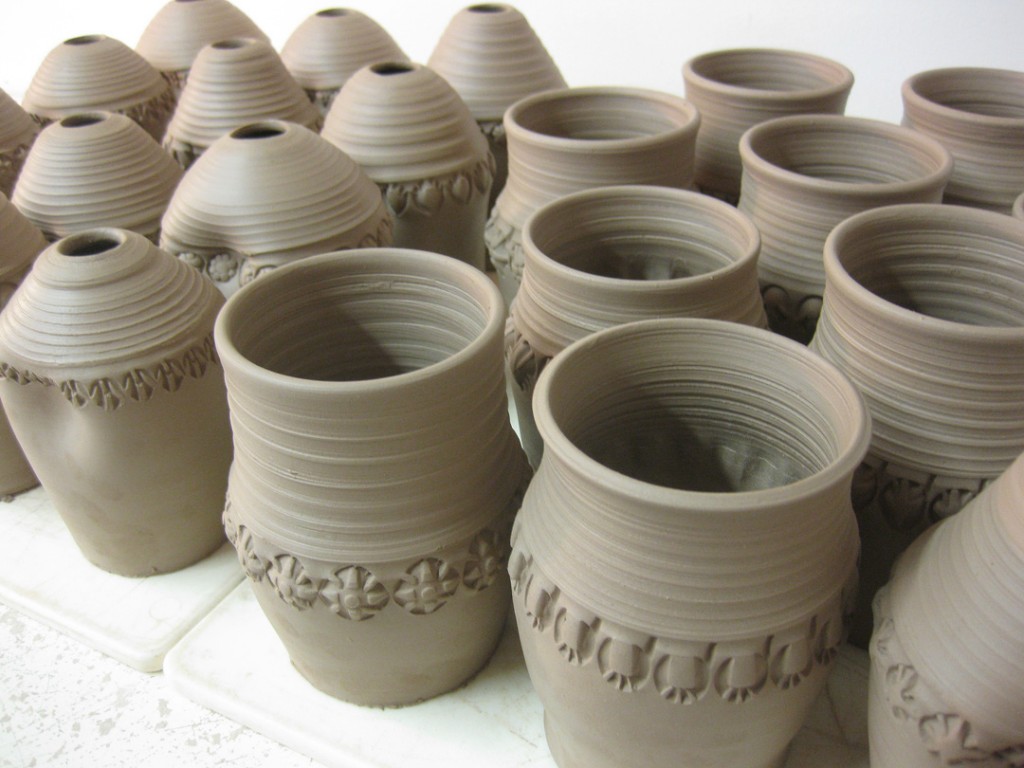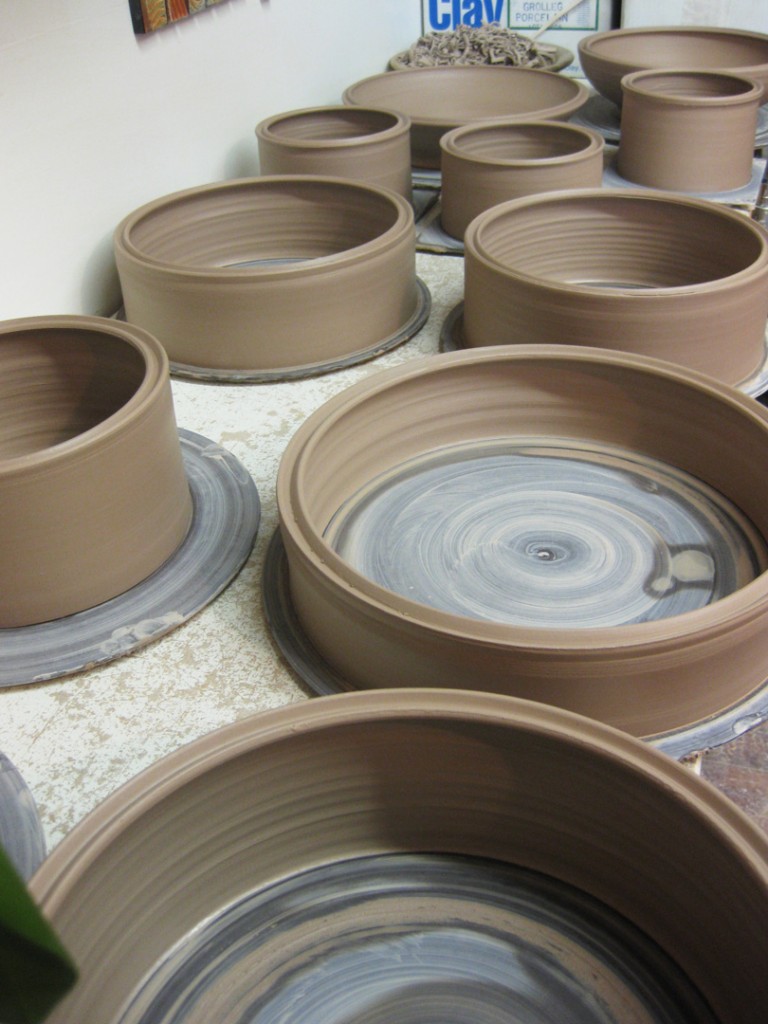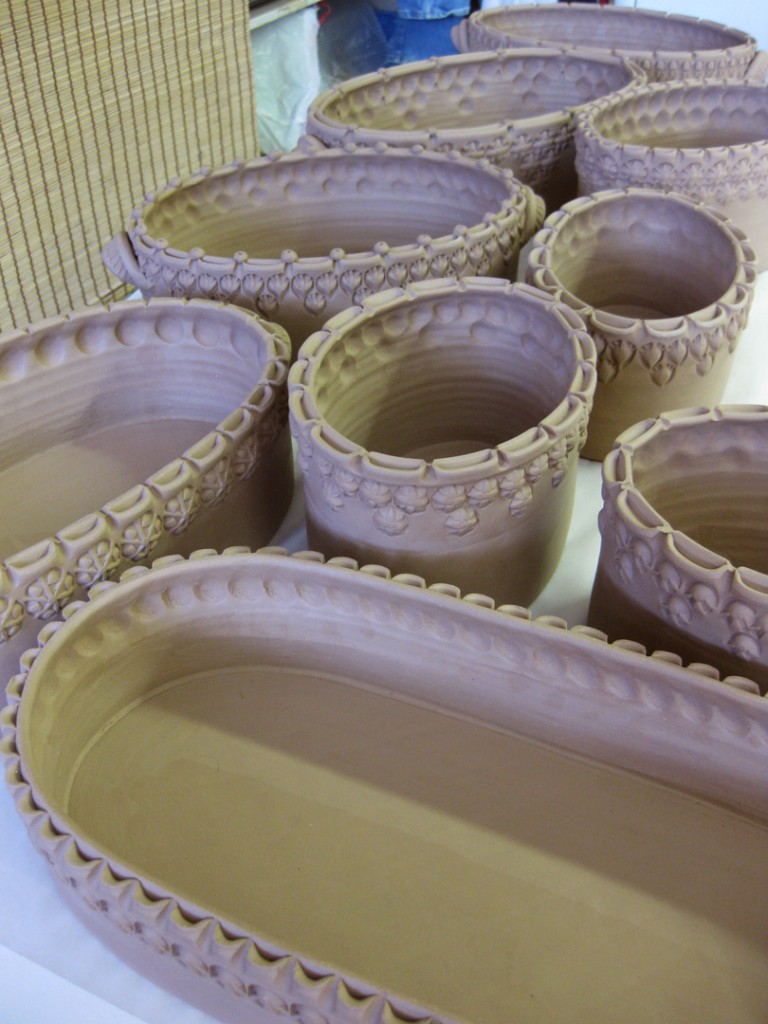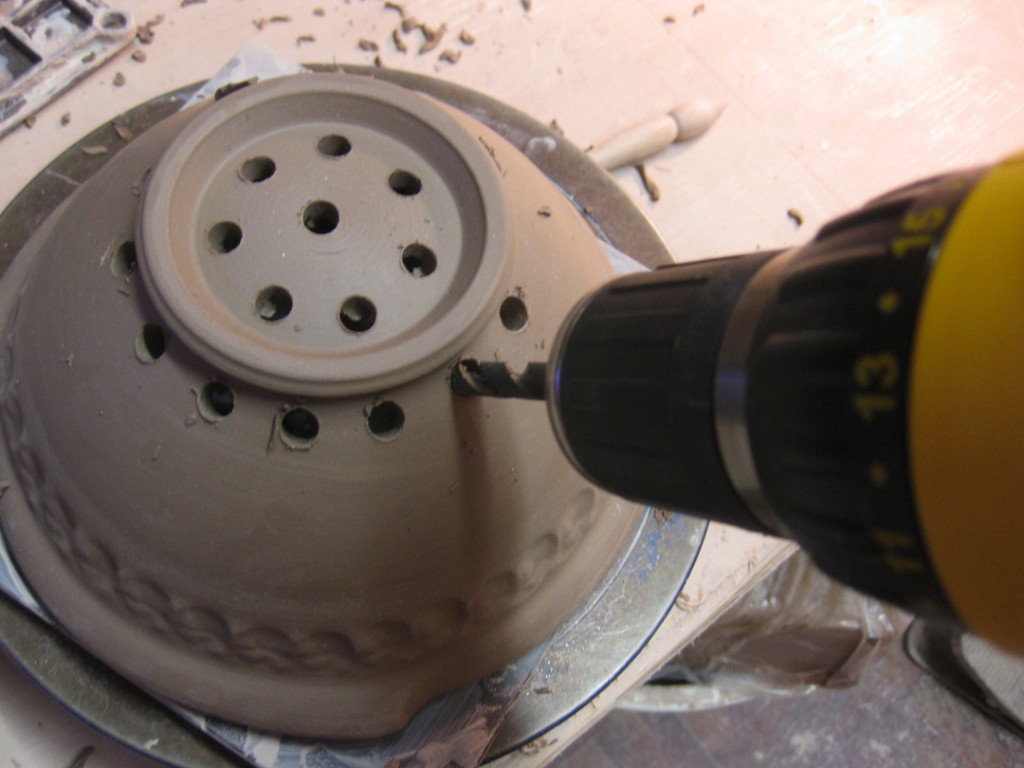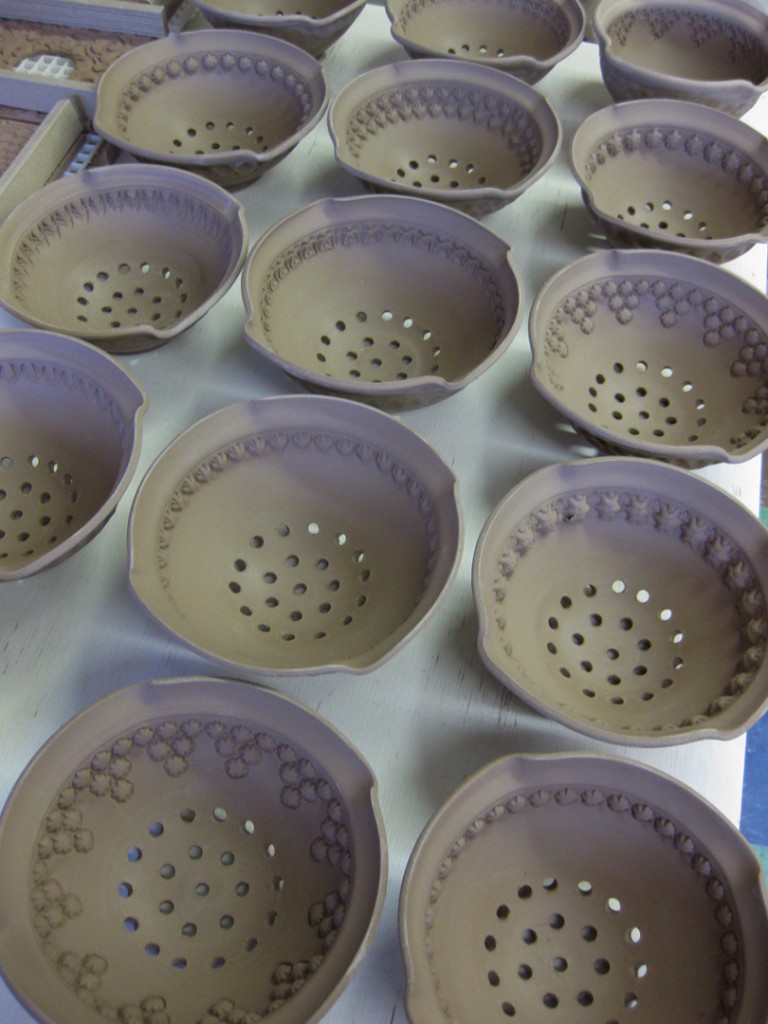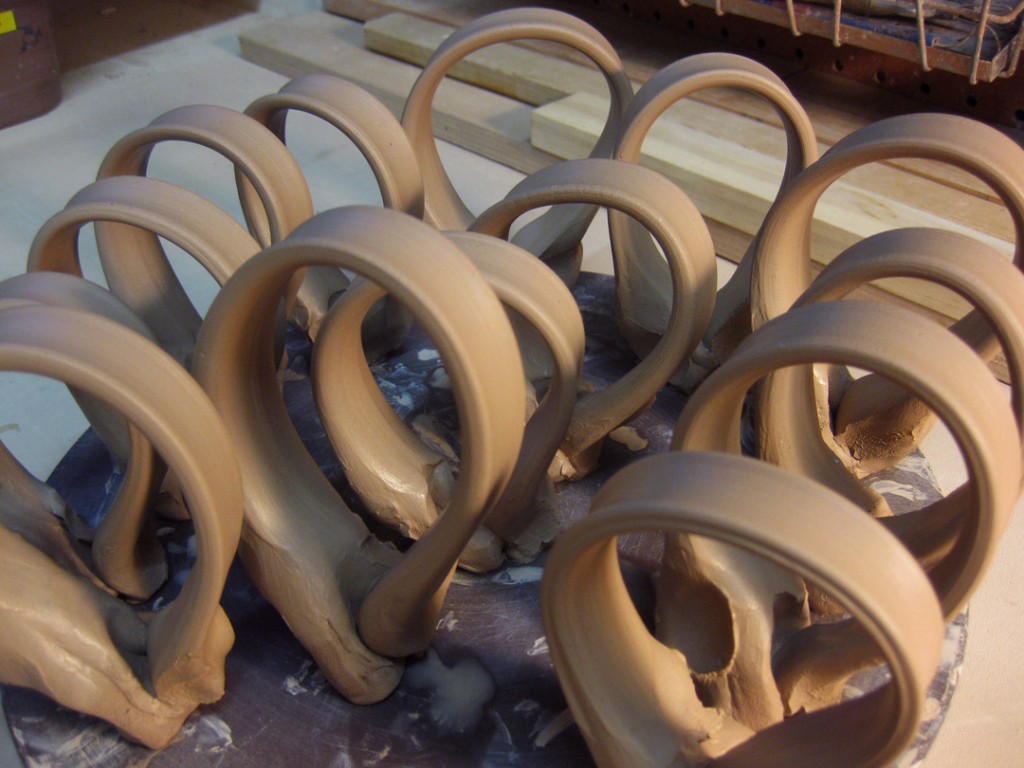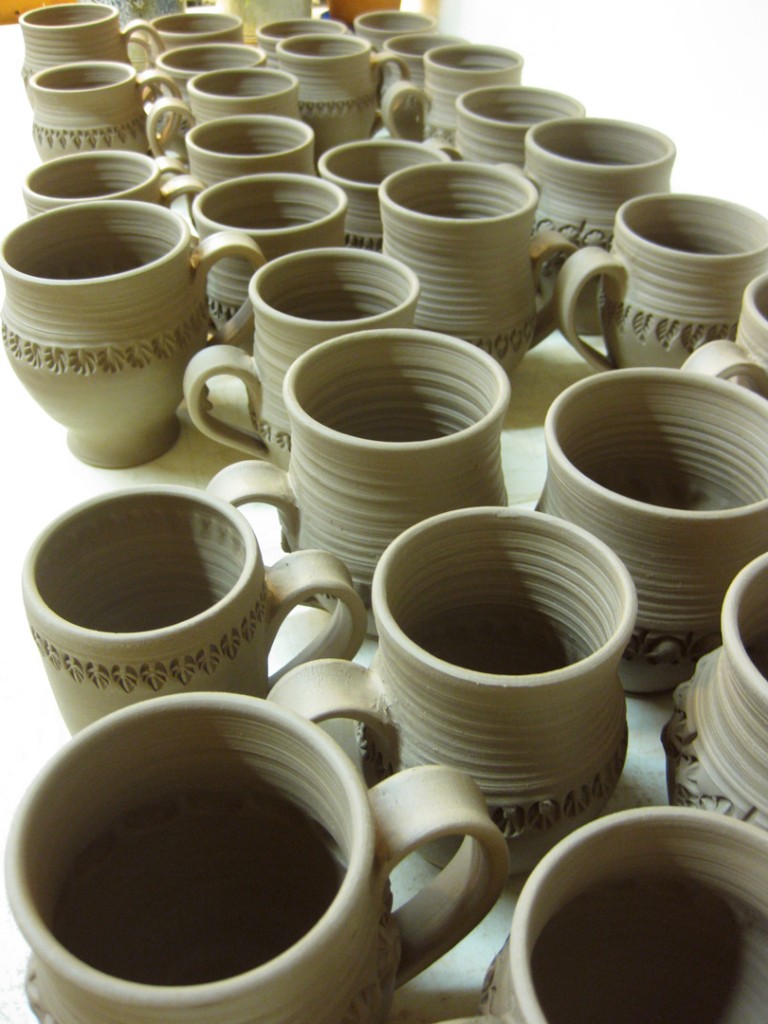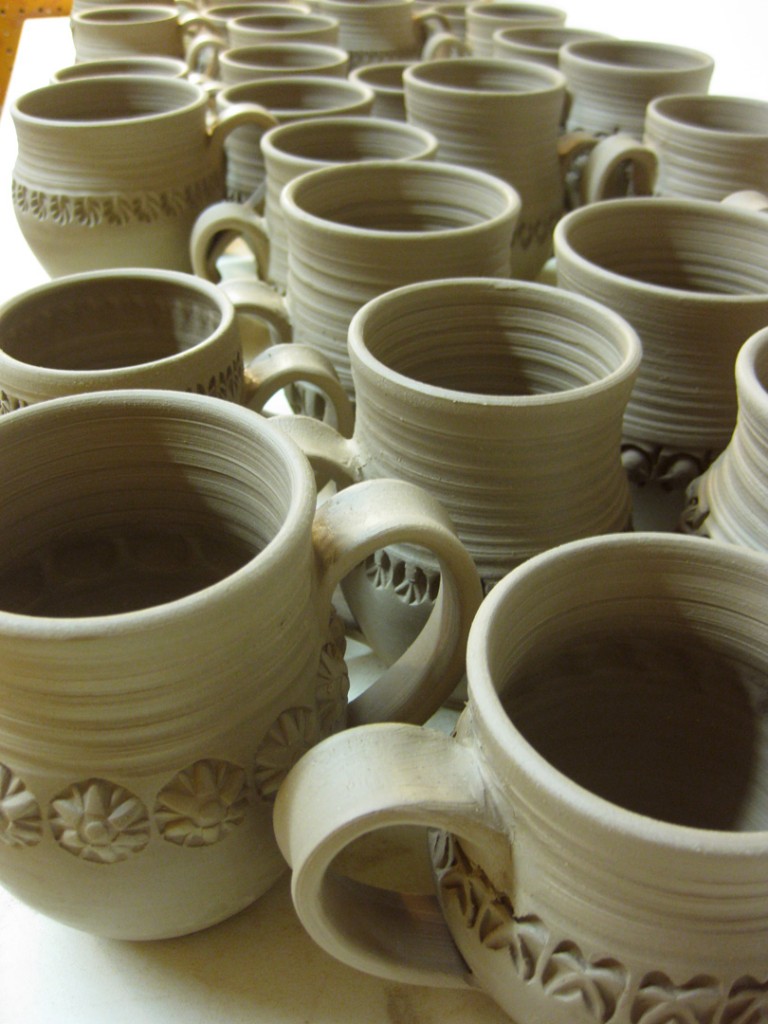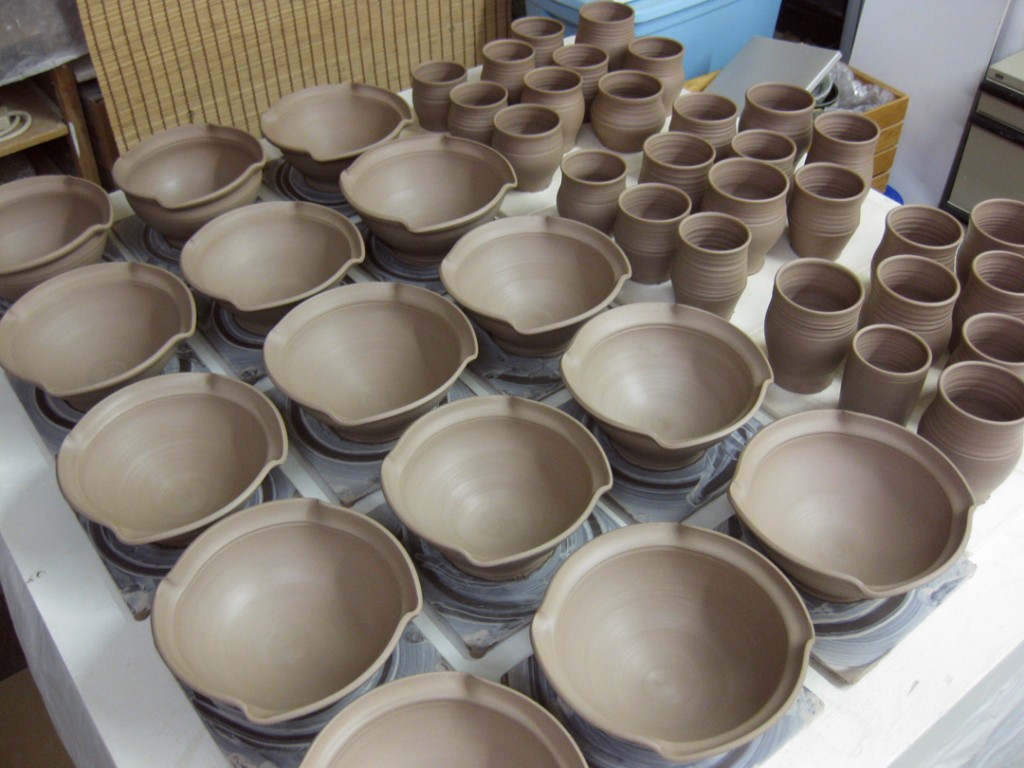Tonight was week #9 of my beginning wheelthrowing class. Only one more week!
They have all of the basic skills and are busy working & making pots!
So tonight I thought it would be great to surprise them all with a wonderful surface
decoration demonstration by my friend & potter Amy Higgason. Amy has been in town
for the weekend, and after her Trunk Show on Friday, we thought it would be fun for her
to do a demo for my class. So Amy threw a few pots last Friday, trimmed ’em today
and set off carving them tonight! A special treat for my students.

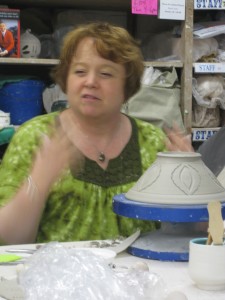

Amy started her demo with a discussion of the tools she uses… a few simple tools
that make a wide range of textures & patterns. Some of them actual ceramic tools,
while others are found items like a broken TV antennae! She then started in on her
demonstration of how she decorates a simple bowl.
Yeah, well it started out simple anyway…



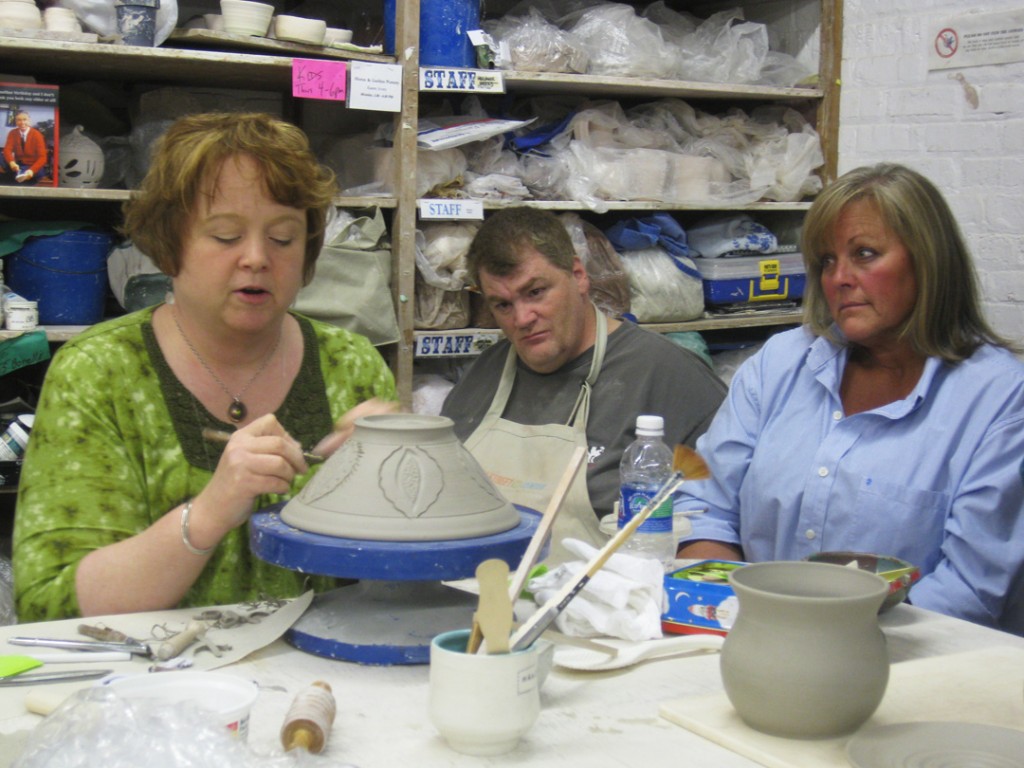
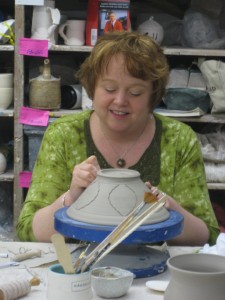

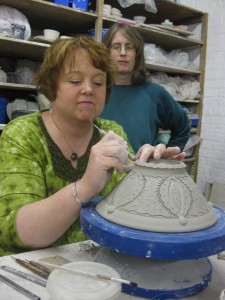
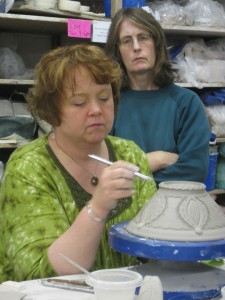



Suddenly, not so simple of a bowl any more!!!

Then she moved on to a small creamer pitcher. A quick trick of cutting a vase shape to make
the spout. A little wetting, sponging, finessing and shaping to create the spout. After the spout
is formed, she then set in to the carving & decorating of this piece.






Amy then showed my class how she makes her leaf-shaped handles out of a slab.


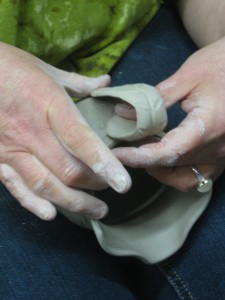
And then in Amy World, a pitcher can’t be just a pitcher… it needs a saucer to sit on too!
And not just any saucer, but an over-the-top, decoratively carved plate!!!



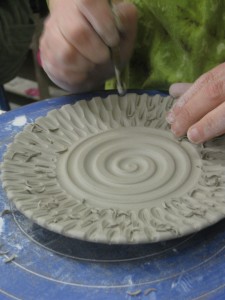


And then to close out the evening, I surprised Amy with a birthday cake
to help celebrate her big day. Nothing says birthday like a big chocolate cake!!!

So let me send out a quick Thank You again to Amy Higgason for sharing her talents
& creativity with us. I’m sure my students were inspired and will be incorporating some of
her techniques into their work. I know I enjoyed Amy’s time here this weekend,
and I hope she had some fun with us celebrating her big birthday!

